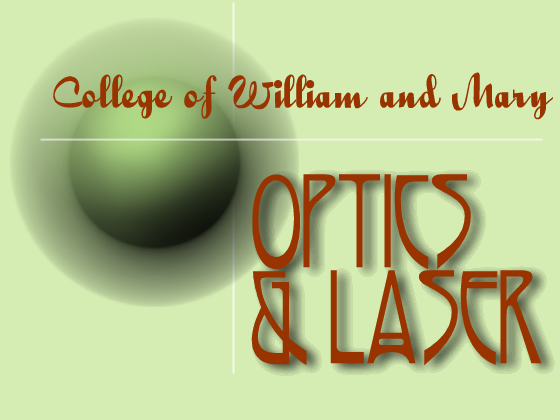
| |
| Home |
| Contact |
| Directions |
| Research |
| People |
| Publications |
| Photos |
| myWM |
SP-Enhanced Transverse MSHG |
In this project, we study the SP-enhanced MSHG from single-crystal iron film samples under the Kretschmann-Raether configuration. Large enhancement of both the MSHG signal intensity and magnetic contrast ratios are observed under attenuated total reflection (ATR).
Under the Kretschmann-Raether configuration and with a P-polarized incident beam, the reflection is maximized when the total reflection condition is reached. The reflection decreases sharply when the incident angle increases further, which is called attenuated total reflection (ATR). The ATR can be explained by either destructive interference or coupling of light energy into the SPs on the metal surface. The intensity of the electro-magnetic field on the metal surface at the metal-air interface becomes enhanced under the ATR condition, and reaches its maximum at the bottom of the ATR curve for noble metals.
 |
|---|
Sample I is a 10-nm thick single crystal Fe film grown on an MgO (001) substrate with axis [110] along the x-direction, capped with a 40-nm thick Au layer. This structure is expected to have huge field enhancement due to the Au cap layer. A very large MSHG signal is generated under ATR condition because of the enhancement of the fundamental field [Fig. 1(a)]. The magnetic contrast in the MSHG signal is negligible when a magnetic field of H = +/− 100 Oe is applied along the y-direction. This result provides some important information: First, the experiment confirms that the enhanced MSHG signal under ATR condition is generated at the Au surface (Au/air interface) and not the Fe/Au interface because there is no magnetic response. Second, it shows that the MSHG response from the Fe-MgO interface is negligible under this configuration.
Of more interest is Sample II, which is also a 10-nm thick single-crystal Fe film grown on an MgO (001) substrate with axis [110] along the x direction, but without an Au cap layer. This structure is expected to exhibit large SP-enhanced magnetic response from the Fe surface (Fe/air interface). One common concern is that the Fe film is not suitable for huge field enhancement due to its large damping of electromagnetic fields compared to noble metals like Ag and Au. Actually, Fe films have been widely studied in surface plasmon coupled emission (SPCE), plasmon coupled chemi-luminescence, and long-range surface polaritons (LRSPs) by the ATR method. Furthermore, as mentioned in the introduction section, other pure magnetic materials alone have been used to study the interaction between MSHG and SPs.
Figure 1(b) shows the angle-of-incidence dependent T-MSHG signal from sample II for applied magnetic fields H = +/− 100 Oe. Note that the ATR curve is not as sharp as that of sample I [Fig. 1(a)] as it is stretched out due to absorption, i.e. strong damping. Without ATR [θ is less than 40°, where θ is the incident angle, as defined in Fig. 1(a)], the MSHG signal is very small and the magnetic contrast is negligible. Under ATR condition with generation of SPs leading to an enhanced surface field, both the MSHG signal strength and the contrast ratio become enhanced. As a result, a very strong signal with good magnetic contrast is observed. This is the SP-enhanced T-MSHG effect.
 |
|---|
The hysteresis loops for SP-enhanced T-MSHG and T-MOKE and the contrast ratios based on the hysteresis loops are shown in Fig. 1(c)-(e). Both show an increased contrast ratio as total reflection becomes more attenuated. However, the contrast ratio of enhanced T-MSHG is more than one order of magnitude larger than for T-MOKE. The combination of large magnetic contrast, highly enhanced T-MSHG and the high surface sensitivity of SPs shows great potential for a new generation of nonlinear magneto-optical SPs sensor for bio-chemical applications.
References:
- Wei Zheng, Aubrey T. Hanbicki, Berend T. Jonker, and Gunter Lüpke, Surface plasmon-enhanced transverse magnetic second-harmonic generation, Optics Express Vol. 21, Iss. 23, (2013), 28842.
Funding: DOE
|